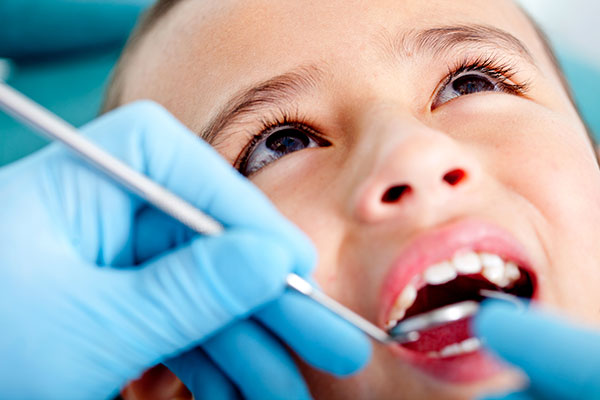Cavity Prevention & Treatment in Hermitage, TN
Seeing your child smile warms the heart of any proud parent. Our team at Zoo Crew Pediatric Dentistry wants to partner with you to help your child enjoy good oral health and proper dental development. We offer tips, tricks, and great ideas to deter cavities and gum disease that teach children proper brushing and flossing techniques. We also recommend dental sealants to protect hard-to-clean back teeth from developing cavities.
If your kiddo complains of a toothache or you notice a dark or black spot emerge on one of their teeth, bring them in to see one of our gentle children’s dentists. A thorough exam and x-rays will reveal the cause of the problem, which might be a cavity – otherwise known as tooth decay or dental caries. We’ll explain your child’s diagnosis and recommend treatment. First and foremost, we will get your child out of pain. Second, we’ll repair the affected tooth with a durable, long-lasting filling or crown.
Prevent Cavities with Good Oral Hygiene
Our parents, teachers, and dentists always say that eating too much sugar can give us cavities. But it’s not just sugar – foods like cereal, bread, crackers, and pastries can also cause tooth decay because they have starch in them. When we eat these foods, the germs in our mouths turn them into acid. This acid can damage the outer layer of our teeth, making them weak and easy for cavity-causing germs to make holes in them.
Our saliva can fix this damage by replacing lost minerals, but it takes about an hour. During that time, our teeth are more vulnerable to getting cavities. Also, acid from foods and drinks like sports drinks, citrus fruits, and sodas can wear down our teeth’s outer layer, making it easier for cavities to form.
Help your kids deter cavities by doing the following:
- Brush with fluoride toothpaste (use non-fluoridated paste for kids under one year of age, a grain of rice sized amount for children over 1, and a green pea size amount for children ages 3 and up), and a soft-bristled, age-appropriate toothbrush for two minutes, twice a day
- Attend checkups and cleanings at our office every six months.
- Visit Zoo Crew Pediatric Dentistry for an exam if your child complains of a toothache or you notice any abnormalities in your kiddo’s mouth.
- Allow us to apply dental sealants to your child’s molars.
- Limit sugars, starches, and sweets in your kid’s diet.
- Eliminate sodas and sugary sports drinks from your child’s diet.
- Ask our dentist or hygienist to demonstrate proper brushing and flossing techniques and advise you on the best products for your child’s home hygiene routine.
- Allow your child to drink tap water because it’s fortified with fluoride, which strengthens tooth enamel.
- Remind your child to rinse his mouth with water after eating.
- Provide a straw for drinking acidic beverages like orange juice and lemonade. A straw reduces the contact the beverage has with teeth.
DID YOU KNOW?
Tooth enamel is the hardest substance the human body creates, and it’s also the second-hardest naturally occurring substance on the planet. Only diamonds are stronger!
How to Treat Cavities
Research shows that only 1% of humans avoid tooth decay. The other 99% of us will experience one or more cavities during a lifetime.
Cavities can develop in obvious locations, but they can also hide between teeth or even below the gum line. X-rays show us these hidden areas, so your children’s dentist will know for sure if your kiddo has any tooth decay.
Small cavities can be effectively treated with fillings. We can use composite resin for tooth-colored fillings because it is strong, non-corrosive, and mercury-free. Larger cavities may require a crown to stabilize a structurally unsound tooth. We will administer an anesthetic to keep your child comfortable during the procedure, and you’re welcome to remain with your child or relax in our lobby.
DID YOU KNOW?
In addition to continually replacing lost teeth and having up to 300 teeth at one time, sharks have teeth that naturally contain fluoride, so they never develop cavities.
Cavity Prevention & Treatment in Hermitage
Parents should understand that cavities won’t go away if untreated. They’ll only worsen to cause more significant issues and toothaches. Also, cavities in baby teeth not only cause pain but can damage undeveloped permanent teeth. So, whether your child’s cavity is in a baby tooth or permanent tooth, it needs treatment.
Contact us today to schedule an exam, checkup, cleaning, or orthodontic consultation in Hermitage. We look forward to taking care of your child.



